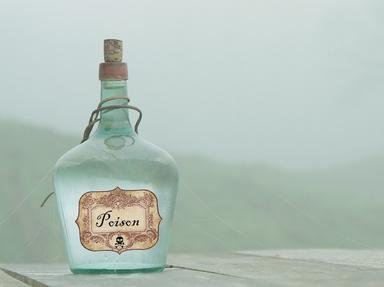Quiz Answer Key and Fun Facts
1. Of the following mixtures, which do you think upper class women in the 18th century would have used to achieve the pale skin appearance that was in fashion?
2. Why did people of the middle ages soak flypaper in water?
3. In the days before Benzoyl Peroxide, what was sometimes used to treat blemishes?
4. Which deadly nightshade were Italian women known to use to enhance their beauty?
5. Several cosmetics in the early twentieth century contained which newly discovered element?
6. Twenty hours of radiation exposure was once used in the battle for beauty and youthfulness to permanently remove what from the body?
7. What "special" ingredient would ancient Egyptians often add to lipstick for very red lips?
8. Applying eyelash extensions was a dangerous process in the nineteenth century. It required a steady hand and some sedation for the subject, or victim. Which of the following may they have used?
9. On which part of the body would a man rub a mixture of strychnine and cantharidin?
10. In 1914 Eugene Rimmel began producing which first commercially formulated "non toxic" cosmetic?
Source: Author
chris1162
This quiz was reviewed by FunTrivia editor
rossian before going online.
Any errors found in FunTrivia content are routinely corrected through our feedback system.


